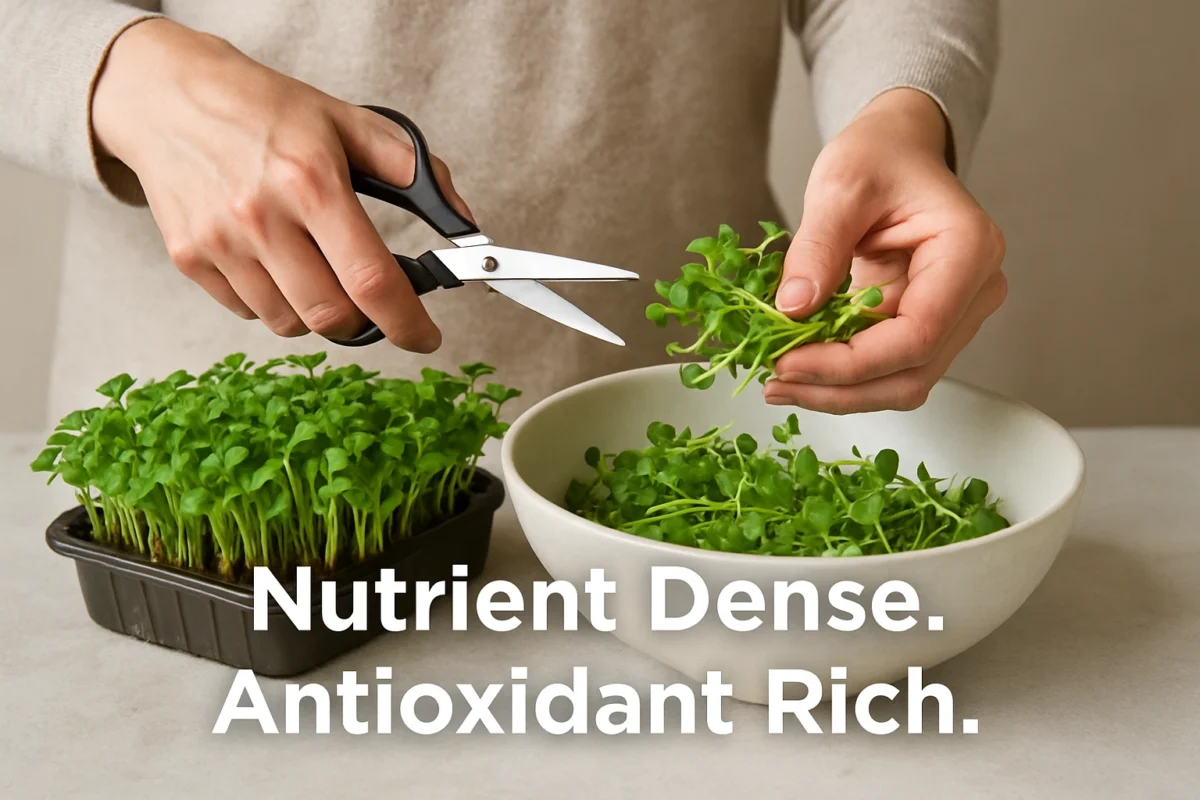
Introduction
Microgreens have taken the health and culinary world by storm. Often described as “young seedlings of edible vegetables and herbs,” they are praised for their vibrant colours, intense flavours, and surprisingly rich nutritional profile. One of the standout features contributing to the antioxidant power of microgreens is their high concentration of health-boosting compounds. In fact, the antioxidant power of microgreens is often greater than that of their mature vegetable counterparts, making them a smart and flavourful addition to any diet.
But what exactly are antioxidants, and why are microgreens such a potent source? In this article, we explore the science behind the antioxidant power of microgreens, compare them to mature vegetables, and provide practical tips for incorporating them into your daily diet.
What Are Antioxidants and Why Do They Matter?
Understanding Oxidative Stress
Oxidative stress occurs when there is an imbalance between free radicals and antioxidants in your body. Free radicals are unstable molecules that can damage cells, leading to inflammation, ageing, and various chronic diseases.
Role of Antioxidants
Antioxidants are compounds that neutralise free radicals, preventing or reducing the damage they cause. Common antioxidants include:
- Vitamin C
- Vitamin E
- Beta-carotene
- Polyphenols
- Flavonoids
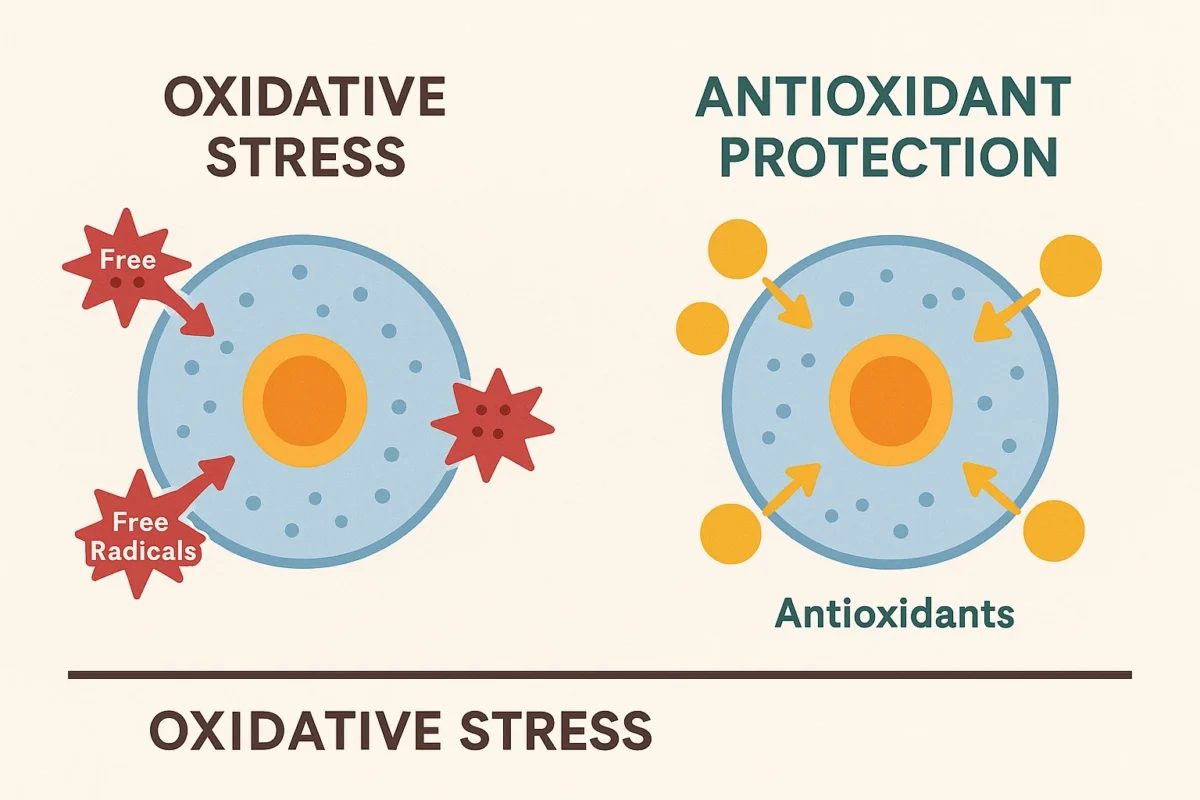
Microgreens as an Antioxidant Powerhouse
What Research Tells Us
A pivotal study by the USDA and University of Maryland in 2012 analysed the antioxidant power of microgreens, evaluating the levels of antioxidants in 25 commercially available varieties.
“Red cabbage, cilantro, garnet amaranth, and green daikon radish microgreens had the highest concentrations of vitamin C, carotenoids, vitamin K, and vitamin E.”(USDA Research, 2012)
In many cases, these young greens contained four to 40 times more nutrients than their mature counterparts.
Top Antioxidant-Rich Microgreens
- Red cabbage – exceptionally high in vitamin C and anthocyanins
- Broccoli – rich in sulforaphane and flavonoids
- Radish – full of polyphenols and vitamin E
- Coriander (cilantro) – high in lutein and beta-carotene
- Amaranth – loaded with vitamin K and antioxidant pigments
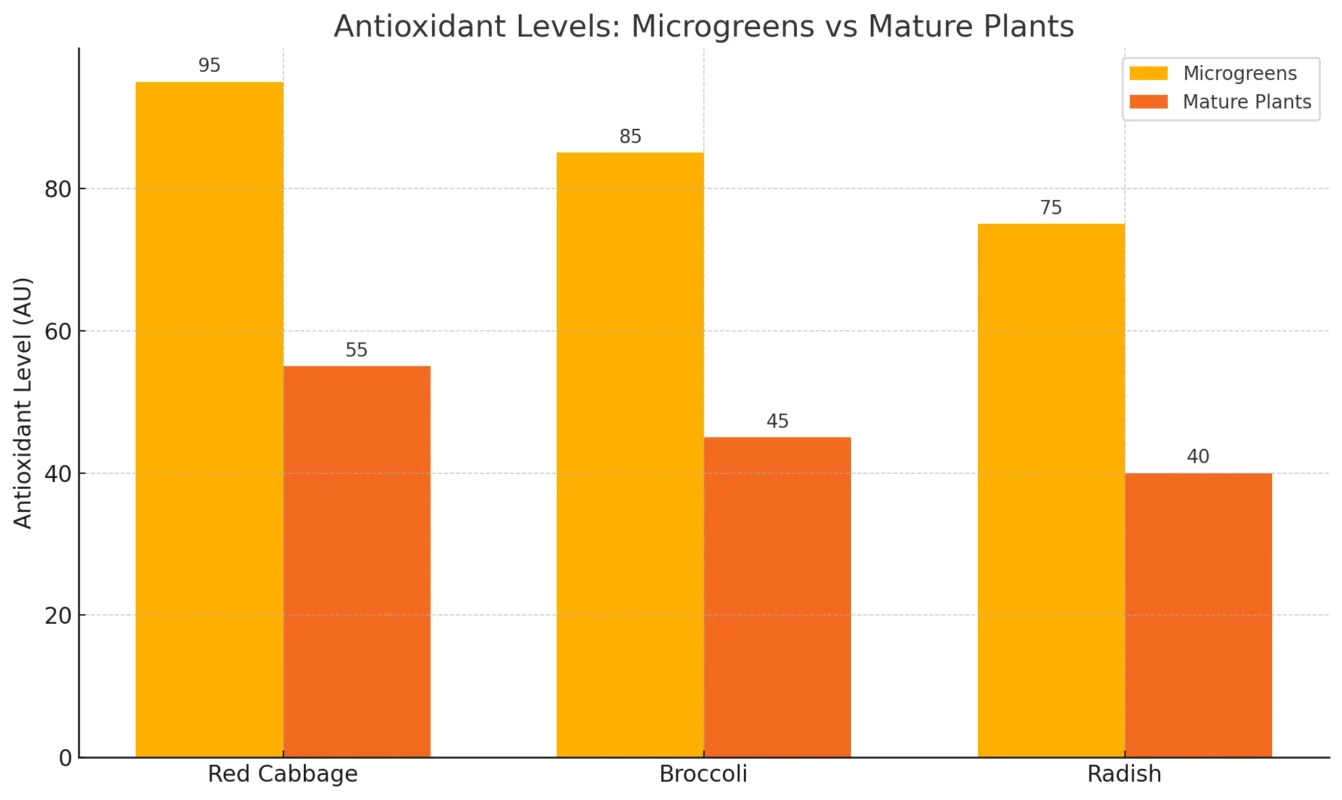
How Do Microgreens Compare to Sprouts and Mature Vegetables?
Microgreens vs Mature Greens
Unlike mature vegetables, microgreens are harvested just after the cotyledon leaves have developed. This is when antioxidant levels are at their peak.
A study published in the Journal of Agricultural and Food Chemistry reported that microgreens contain significantly higher levels of vitamins and phytochemicals than the same vegetable in its mature form (Xiao et al., 2012).
Microgreens vs Sprouts
While sprouts are germinated seeds usually eaten whole (including the root), they contain more water and fewer antioxidant pigments. In contrast, the antioxidant power of microgreens is significantly higher, as they are grown in light, develop leaves, and retain more nutrient-dense compounds.
| Feature | Sprouts | Microgreens |
| Grown in light? | No | Yes |
| Harvested at? | 2–5 days | 7–14 days |
| Contains leaves? | No | Yes |
| Antioxidant level | Moderate | High |
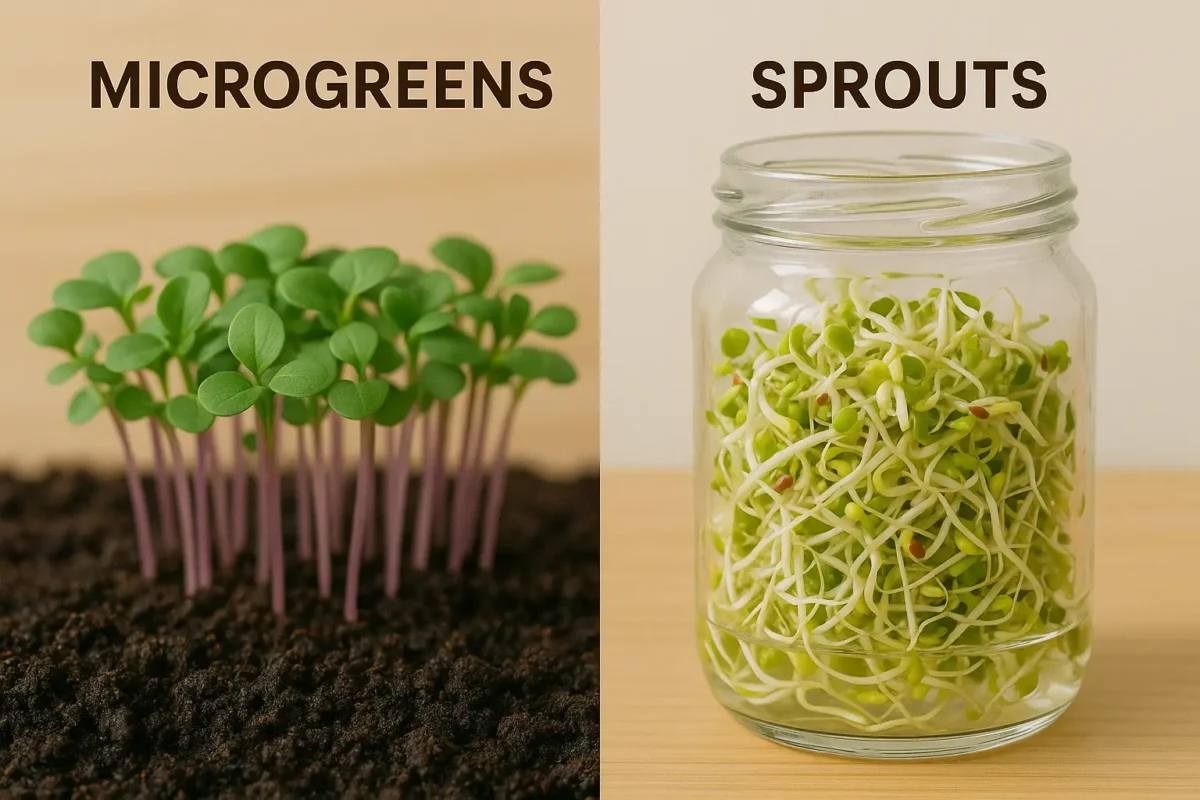
Health Benefits of Antioxidants in Microgreens
Supporting Heart Health
Oxidative stress is a key contributor to cardiovascular disease. The antioxidant power of microgreens plays a significant role in combating this stress. Varieties like red cabbage and mustard greens have been shown to lower LDL cholesterol and reduce markers of inflammation in animal studies, highlighting the powerful cardiovascular benefits linked to the antioxidant power of microgreens.(Journal of Agricultural and Food Chemistry, 2016).
Reducing Cancer Risk
Broccoli and radish microgreens are rich in sulforaphane, a compound that has been shown to inhibit cancer cell growth and improve liver detoxification enzymes. A 2024 paper in Molecular Medicine titled “Potential mechanisms of cancer prevention and treatment by sulforaphane” outlines how sulforaphane works on multiple cancer-related pathways.
Promoting Skin and Eye Health
Vitamin A (beta-carotene) and vitamin C found in many microgreens support collagen production, reduce UV damage, and protect against age-related macular degeneration.
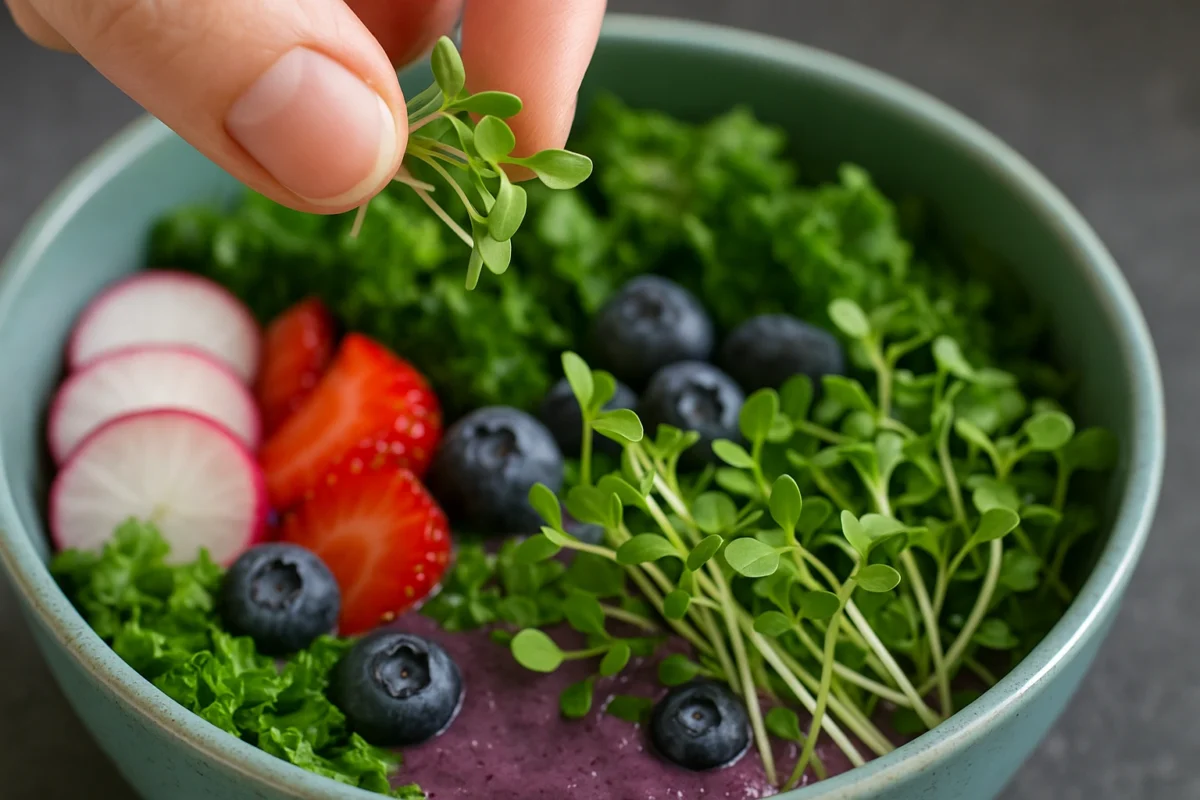
How to Maximise Antioxidant Intake From Microgreens
Eat Them Fresh
Antioxidants degrade over time. Store microgreens properly (see our storage guide) and consume them within 5–7 days of harvest.
Avoid Cooking
Heat can destroy delicate antioxidant compounds like vitamin C. Use microgreens raw — in salads, on sandwiches, or as a garnish.
Pair With Healthy Fats
Some antioxidants, such as beta-carotene and vitamin E, are fat-soluble. Combine microgreens with olive oil, avocado, or nuts to improve absorption.
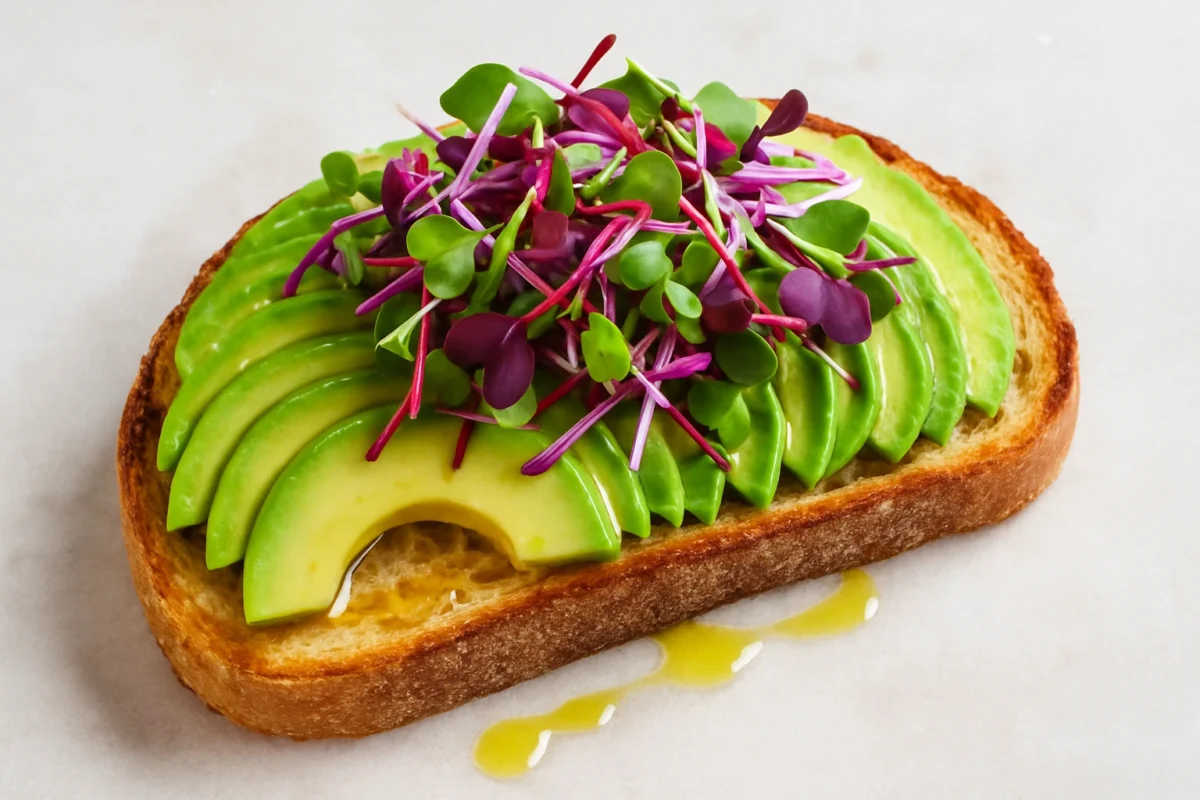
Growing Your Own Antioxidant-Rich Microgreens
Best Varieties to Grow at Home
If you want to maximise antioxidants, grow:
- Red cabbage
- Broccoli
- Kale
- Radish
- Amaranth
These are fast-growing and nutrient-dense options ideal for beginners.
Basic Growing Setup
- Use shallow trays with drainage
- Coco coir or compost as medium
- LED grow light if indoors
- Mist during germination, then bottom water

Final Thoughts
Microgreens are more than just trendy toppings — they’re nutritional powerhouses loaded with antioxidants. Backed by strong research, the antioxidant power of microgreens offers a convenient and tasty way to protect your body from oxidative stress and chronic disease. Embracing the antioxidant power of microgreens in your daily meals is an easy step toward better health.
By choosing the right varieties, eating them fresh, and storing them properly, you can make microgreens a cornerstone of your healthy diet.
Whether you’re looking to prevent disease, improve skin health, or simply add colour and crunch to your meals — microgreens are a delicious step in the right direction.
Sources:
USDA Agricultural Research Service – Microgreens
Molecular Medicine Journal, 2024 – Sulforaphane in Cancer Prevention
Xiao Z et al., 2012. Journal of Agricultural and Food Chemistry
NCBI – Cardiovascular Benefits of Red Cabbage Microgreens
